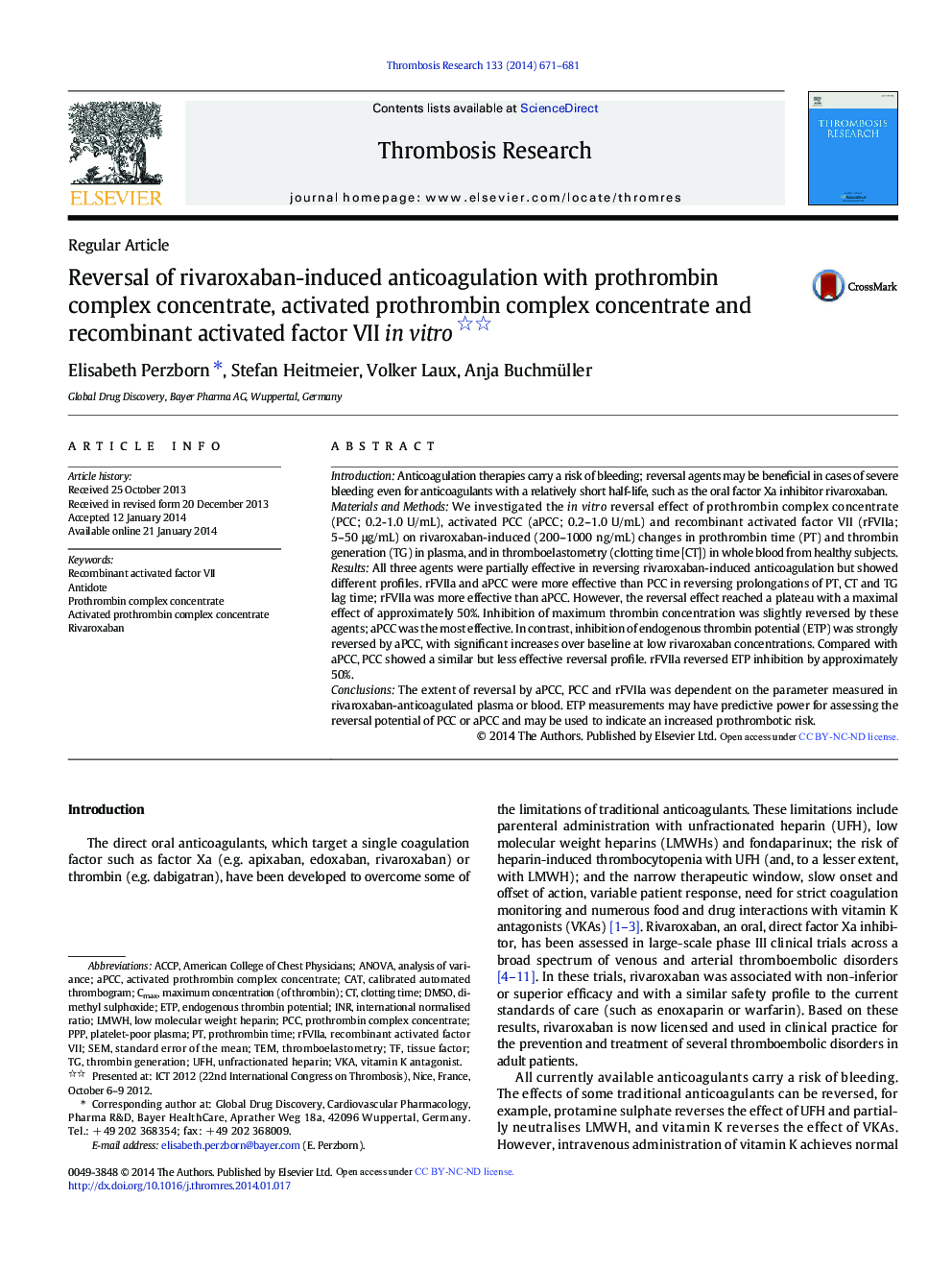| کد مقاله | کد نشریه | سال انتشار | مقاله انگلیسی | نسخه تمام متن |
|---|---|---|---|---|
| 6001424 | 1182949 | 2014 | 11 صفحه PDF | دانلود رایگان |

IntroductionAnticoagulation therapies carry a risk of bleeding; reversal agents may be beneficial in cases of severe bleeding even for anticoagulants with a relatively short half-life, such as the oral factor Xa inhibitor rivaroxaban.Materials and MethodsWe investigated the in vitro reversal effect of prothrombin complex concentrate (PCC; 0.2-1.0 U/mL), activated PCC (aPCC; 0.2-1.0 U/mL) and recombinant activated factor VII (rFVIIa; 5-50 μg/mL) on rivaroxaban-induced (200-1000 ng/mL) changes in prothrombin time (PT) and thrombin generation (TG) in plasma, and in thromboelastometry (clotting time [CT]) in whole blood from healthy subjects.ResultsAll three agents were partially effective in reversing rivaroxaban-induced anticoagulation but showed different profiles. rFVIIa and aPCC were more effective than PCC in reversing prolongations of PT, CT and TG lag time; rFVIIa was more effective than aPCC. However, the reversal effect reached a plateau with a maximal effect of approximately 50%. Inhibition of maximum thrombin concentration was slightly reversed by these agents; aPCC was the most effective. In contrast, inhibition of endogenous thrombin potential (ETP) was strongly reversed by aPCC, with significant increases over baseline at low rivaroxaban concentrations. Compared with aPCC, PCC showed a similar but less effective reversal profile. rFVIIa reversed ETP inhibition by approximately 50%.ConclusionsThe extent of reversal by aPCC, PCC and rFVIIa was dependent on the parameter measured in rivaroxaban-anticoagulated plasma or blood. ETP measurements may have predictive power for assessing the reversal potential of PCC or aPCC and may be used to indicate an increased prothrombotic risk.
Journal: Thrombosis Research - Volume 133, Issue 4, April 2014, Pages 671-681